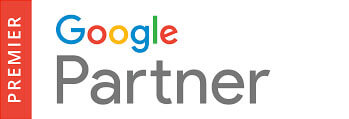Finding the right Adwords Reporting Software for our Results Based Agency.
Keeping a keen eye on budgets and expenditures is critical to any digital agency. Over-spend and your clients will be annoyed; under-spend and it could affect the results, ROI, or your campaigns.
If you’re using paid-advertising- think Adwords, Bing Advertising, social media advertising, remarketing- then you need to have the sharpest tools in the shed to analyse and succinctly display your results. While a lot of these channels may offer robust and intuitive dashboards for managing both performance metrics and budget, constant tab jumping and calculating daily/ weekly/ monthly spend can chew up considerable amounts of time- time that could be spent improving the performance of your campaigns.
Twelve months have passed since I started on my journey; searching for a platform that would become a centralised hub for my results-orientated and fast-growing digital agency. That lengthy investment of time and frustration spent on the gaps in current software suites has led me to this post, so you can avoid making the same missteps.
My journey started with:
5) Google Drive
Overall, Google Drive is a fantastic tool that allowed me to set up a cloud-based server for my agency, with tiered access based on each staff members’ responsibilities and role. A little more exploring through Google Sheets even retired the traditional Excel sheet, since now my data entry could be achieved through a collaborative tool, ideal for keeping track of expenditure.
So we had lift off; daily, we had an administrative attendant who would enter the daily spend amounts from ad mediums (such as Google Adwords and Facebook) into the sheet. With the use of a formula, we now could automatically deduct this from the total budget, and divide that amount by the days left in the month. It was a crude but effective solution, although it left us open to human error.
We had a separate column for leads KPI’s, such as keyword rankings and traffic-generated leads. These are always the most important metric in our agency and we always strive for an accurate insight, due to the fact leads are the one item that creates sales and revenue.
While Google Drive served a valuable purpose, at the time we were on-boarding an average between 4- 6 clients a month, and I knew it might not be able to keep pace with our growth.
4) Supermetrics
Supermetrics is a great tool which allows you to pull data dynamically from many different advertising mediums, and direct it to Google Drive. This was able to add extra value to the investment of time and data in our base of Google Drive, for the Supermetrics price tag of $49 per month- and I would have paid three times that, just to cut down the data entry, and cost of administrative staff. With this tool, any of our ad mediums were now at my finger tips, and able to be pulled dynamically into a single sheet for all to view and auto calculate with formulas and tables.
I had big ambitions for this, and turned into a kid at a candy store. I instantly started thinking I could use the graphs in Google Sheets to create gauges for items like ‘Expenditure’, and essentially customise my own dashboard. Reality hit, and I soon realised upon closer inspection that each medium (i.e. Facebook or Google) had to be called independently to the sheet, and then again for each client. This made the initial set-up process way too time consuming, for a ‘time-saving’ tool. The data also had to be called/queried each time, and occasionally pulled in rogue dateranges- probably due to stray data fields during set up. This was extremely frustrating for me because once I entered one client, I copied the items through for the next to act as a base structure for the others… Yeah, huge speed bump. Overall, once everything was set up, it was far better than manual data entry, but it still felt like the pair of boots I was soon to outgrow. And I was right.
As my business continued to develop, so did my most valuable metrics grew, such as frequency rate of ads on Facebook, or cost per converted click on Adwords. However, the daunting thought of going through each client sheet/dashboard, and recalling that data just for these two metrics seemed a counter-productive and downright unfair.
So the search was on once again:
3) Klipfolio
One evening, Klipfolio appeared in my Facebook newsfeed like a mirage in the desert of reporting software. It would appear Facebooks interest targeting was spot on on this occasion, I noted. I arranged a call with a member of their team- not the easiest, when they’re a hemisphere away in Canada.
After an hour on the phone with a representative, and an intensive introduction to the Klipfolio product, I started getting that candy-shop feeling again. Finally, a tool that has all the features I was looking for, even client pivot tables! Sound too good to be true?
You guessed it. Starting at $24 per month and going right up to $199 per month, it would appear we would need to start on the highest plan available with our client numbers. Not an issue, if had ease of use and an intuitive interface that SAVED ME TIME.
While there were plenty of cool integrations, such as white-labelling, SSL domain, custom CC/JavaScript, and custom data store (which lets you host your data on your own server) you could spend up to an extra $936 per month to get access to them.
This software appears to have a language all of its own, and that is why they have a Ninja Services Program at $249 per month (minimum of 3 months). While Klipfolio may be near and dear to other digital advertisers, I find that any software that is complicated enough to require ‘ninjas’ I would not call intuitive or time saving.
After realising I may have gone off track and into the thistles, Klipfolio were nice enough to provide me a refund, and I made a line for the horizon to continue my search.
2) Gecko Board
Trying to lean away from the complicated and expensive comes Gecko Board, with a selection of widgets that didn’t really cater to our requirements. A little tag at the bottom asks “Can’t find the widgets your looking for?”“Send request.” Oh well, at least they tried. Even the Facebook widgets didn’t allow you to pull in conversions and leads, which I found a little dumbfounding.
The interface was quite intuitive and aesthetically pleasing- I could imagine a densely populated dashboard would look quite nice up on the big screen in our office. However, utterly useless without the correct metrics we need to track performance of our campaigns.
This is as far as we got without the customisation required.
1) Report Garden
Almost ready to go back to Supermetrics and give up on my dream of a fully-customisable, easy-to-use, scalable dashboard, I stumbled across Report Garden. No more mirages, Report Garden has been our oasis.
We’ve found Report Garden breaks lots of key areas that are critical to our success. The ability to segregate by client, track performance, create dashboards, and automate the reporting process- and we were only just getting started.
The main dashboard gives out a comprehensive overviewof all the accounts- how they’re performing, and what needs attention. You can allocate different clients to various member of your team, and each client account contain many different tabs/features.
Some we are currently using and really want to highlight are:
Health, Reports, and Dashboards.
Health :
This feature allows you to have a snapshot of performance on a client-by-client basis, and an insight to see how clients associated with each team member are performing. You have data range toggles- for example, to see the last 7 days, or this month versus last month, or same month of last year. Even my standards of flexibility and intuitive software were being soared past now. It also has a ‘Clients That Need Attention’ and a ‘Best Performing Clients’ area, which draws your attention to your best and worst performers- which is helpful when allocating your teams time and efforts.
Reports:
Report templates are able to be created easily, along with a customisable front cover. You can add or remove widgets depending on what mediums a client is using- for example, one client might not use Facebook remarketing, so you simply remove that widget and save the template for next time. You can also automate reports, however we have opted to review all reports prior to being sent to clients. This is imperative when you are trying to grow a culture of accountability and communication in your agency. In the clients’ area you can see all the reports dating back since insertion, giving you a comprehensive resource into your clients activity.
Dashboards:
Working similarly to reporting, dashboardsallow you to add more complex metrics that might not be required for clients. You can also combine all mediums and then total the metrics for example total spend.
Once you create a dashboard template, adding a client to that dashboard is as simple as adding a new client. Simply add the profiles, such as Facebook ads, Google Adwords or Analytics, and then add the dashboard template into the client ‘dashboard’ area. Data pulls in in real time, and to date we have not had any variations between figures in the ad dashboard and what we are seeing in Report Garden. One word; seamless.
Other features, such as SEO, Task, Contacts and CRM, we have yet to investigate- PPC management was our first priority, although we are itching to dig deeper. We have even reached out tothe Report Garden marketing team, and now have the inside scoop on some really impressive new features that will be rolled out over the next months.
After having found the yin to our yang in the software reporting space, we are working closely with the Report Garden team now. We regularly update them on our progress, and also provide feedback on items we feel that would be useful. Our suggestions range from integrations with cloud based invoicing software (such as XERO) to pull in client advertising budgets, and also date range data modifications, to allow us to report how a client is travelling this month compared to the same period last month. In the digital space, you are only as good as your last month.
After so many trials and errors before finally finding Report Garden, the level of sophistication that this relatively young software start-up has integrated into this marketing suite has officially blown our Dilate socks off, and completely rebooted our functioning capabilities.
If you are a growing agency and are having some of the growing pains that we mentioned above, Report Garden would be a great place to start- not finish, like we have done. Learn from our mistakes, and save your time and energy for the important stuff.:)
Happy Marketing.
Our Blog

Our team of digital and business experts will guide you to the right direction.
Let's Talk















